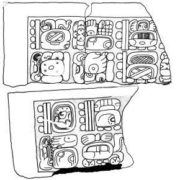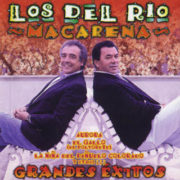Mayan Temple of the Sun 2360 BC
The Mayan Calendar is a series of complex mathematical cycles of stunning precision and breathtaking cosmology. This hieroglyph fragment was on a panel that flanked the main stairs of the Temple of the Sun in Palenque, Mexico, records a birth in mythical time that corresponds to the completion of the 13th k’atun in historical time, which was on October 25, 2360 BC. A k’atun is a unit of time in the Maya calendar equal to 20 tuns or 7,200 days, equivalent to 19.713 tropical years. For more information on this fascinating civilization, please check the book “A Forest of Kings: The Untold Story of the Ancient Maya” by Linda Schele.
El Calendario Maya es una serie de complejos ciclos matemáticos de asombrosa precisión y asombrosa cosmología. Este fragmento de jeroglífico que se encontraba en un panel que flanqueaba la escalera principal del Templo del Sol en Palenque, México, registra un nacimiento en tiempo mítico que corresponde a la finalización del 13 k’atun en tiempo histórico, que fue el 25 de octubre. 2360 antes de Cristo. Un k’atun es una unidad de tiempo en el calendario maya igual a 20 tuns o 7.200 días, equivalente a 19.713 años tropicales. Para obtener más información sobre esta fascinante civilización, consulte el libro ““>Un bosque de reyes: La historia no contada de los antiguos mayas” de Linda Schele.



